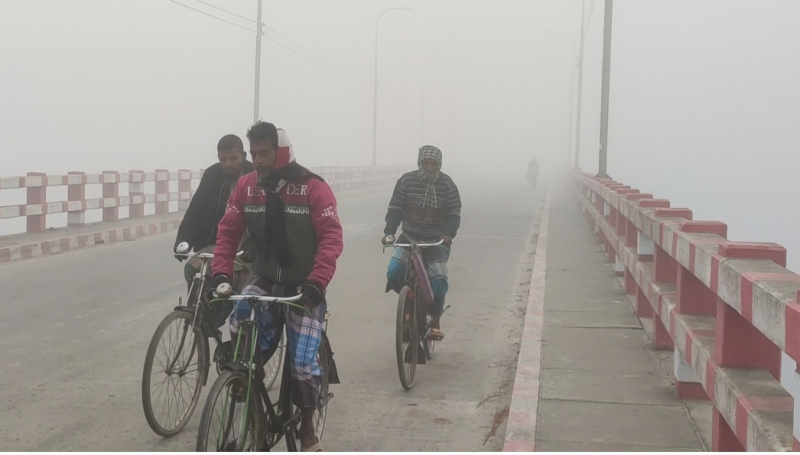- Stock market: DSE fails to sustain early gains, CSE extends rally |
- Illegal arms, disinformation pose major challenges to BD polls: Officials |
- BNP senses ‘dangerous conspiracy’ against democratic transition |
- CEC Vows Credible Election to End Stigma |
- High-level meeting reviews country’s economic progress |
Global Unemployment expected to Rise: ILO
Productivity Slumps, Social Inequality Grows

People out to work in cold foggy weather in a northern district of Bangladesh.
GENEVA — The International Labour Organization warns global unemployment is set to rise this year, putting a brake on the gradual recovery of nations from the dire economic straits brought about by the COVID-19 pandemic.
Data from the ILO’s World Employment and Social Outlook: Trends 2024 report finds global unemployment in 2023, which stood at 5.1%, was at its lowest level since the start of the pandemic in 2019. That rate is projected to increase to 5.2% in 2024.
While the report finds labor markets in 2023 showed “surprising resilience despite deteriorating economic conditions,” it says a deeper analysis of economic trends finds worrying signs of growing fragility and imbalances in labor markets.
“In a time of interacting and multiple crises, this is eroding progress toward greater social justice in the world,” said Gilbert Houngbo, ILO director-general, at the launch of the report in Geneva Wednesday.
“There is still a significant shortage of decent work, jobs in which employees are secure and treated with respect…We believe high quality, decent work is a pre-requisite for sustainable development and for building social justice.”
The ILO chief said an area of great concern was the worsening jobs gap rate, that is, the number of people who would like to work but cannot find employment.
“In 2023, 189 million people were officially reported as being unemployed worldwide. However, more than double that number, 435 million people, wanted employment but could not find it,” he said.
The report finds high income countries are doing better than lower income countries in narrowing the jobs gap rate, which stood at 8.2% in the richer countries compared to 20.5% in the poorer ones. Similarly, it notes unemployment in rich countries stood at 4.5% in 2023, while it was 5.7% in low-income countries.
The ILO reports the absolute number of workers living in extreme poverty grew by about one million last year to more than 241 million people, each of whom earned less than $2.15 a day.
On a slightly more positive note, the report observed that the rates of informal work have returned to close to pre-pandemic levels, “though the number of informal workers reached two billion people in 2023 because of the growing labor force.”
It notes that informal work will account for around 58% of the global workforce in 2024.
The return to pre-pandemic labor market participation rates has varied between different groups. While women’s participation has bounced back quickly, the report found that “a notable gender gap still persists,” especially in emerging and developing nations.
“The gap between men and women is not improving and that is very worrisome,” said Houngbo. “In the post-COVID environment, women workers have gone more in the informal sector than in the formal economy which in itself has a direct impact on the quality of the job.”
The report also found that youth unemployment rates continue to present a challenge for long-term employment prospects.
“Youth unemployment is a particular problem in Africa,” said Richard Samans, director of research at the ILO. “Worldwide, young people — that is people in the workforce of working age, but less than 24 years old — they have an unemployment rate three-and-a-half times that of working age adults.
“Part of the problem here is that in Africa, the number of youths who are not in education, employment, and training is high and is going up quite strongly. So, this is also a worrying development in the case of Africa,” he said.
After a brief post-pandemic boost, the ILO report notes labor productivity has returned to the low level seen in the previous decade. It finds that despite technological advances and increased investment, productivity growth has continued to slow.
Samans blames under-investment in addressing skills shortages as a main reason for technology’s failure to boost productivity.
“We see in countries like the United States a historic under investment in active labor market policies, which is to say skilling as well as employment services and income support during that period.
“All of these things, the low pay, precarity, health issues, ageing populations, and particularly under investment in skills in a very dynamic and changing economic environment are some of the most salient issues that will persist and arguably and potentially even grow larger in the U.S. and a number of other high-income countries,” he said. - Voice of America

